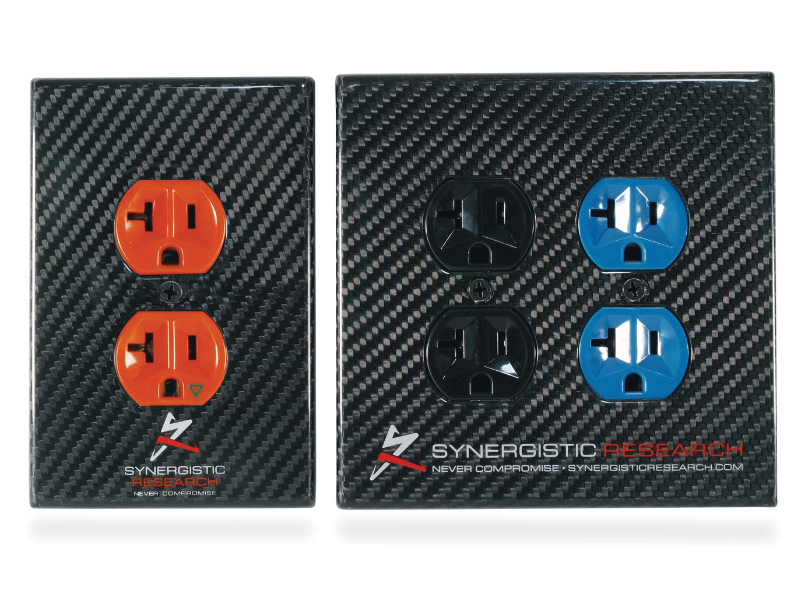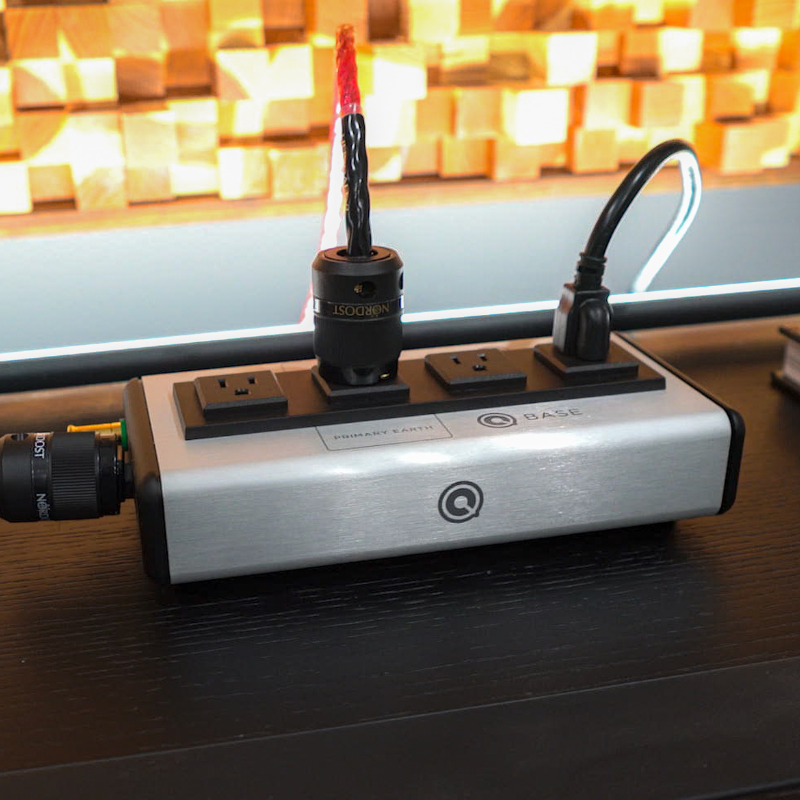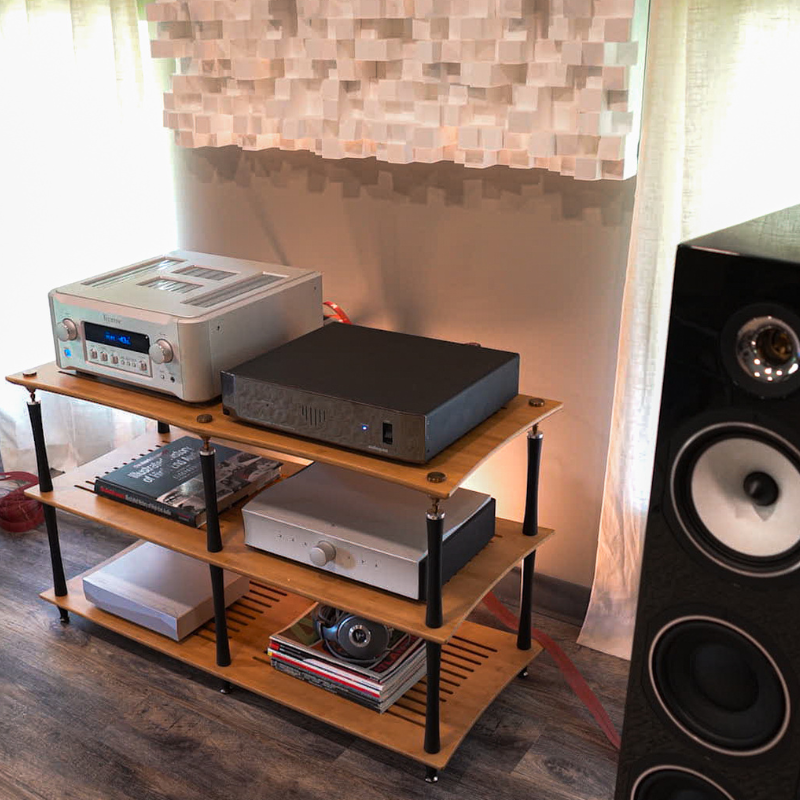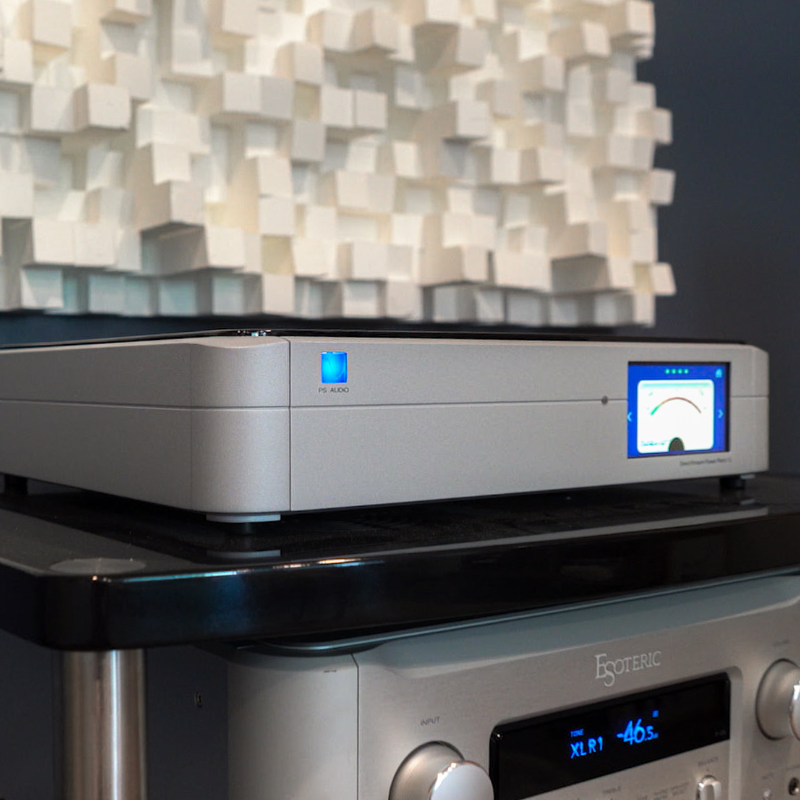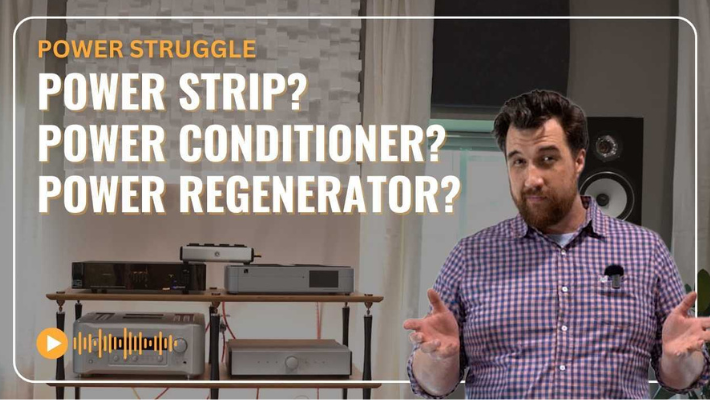Hi-Fi Power Guide: Wall Outlet vs. Power Strip vs. Conditioner vs. Regenerator

Why Power Matters More Than You Think
A customer of mine recently upgraded their amp and DAC. Solid gear too — not some obscure or esoteric setup. This guy was chasing serious performance. He was building a behemoth of a system, and filling out the amp and DAC within the same brand we had been building for a while.
On paper, it was a giant leap forward. But when they hit play, something wasn’t right. The sound was tighter, sure. Cleaner, maybe. However, something still didn’t feel right. It felt a little less lively, pulled back, or veiled like the music was wearing a thin sheet or holding something back.
We asked, "What are you plugging everything into?"
“…just a basic power strip.”
There it was.
Here’s the thing most audiophiles learn after chasing component upgrades: your system is only as strong as the power feeding it. Power isn’t just what turns your gear on — it’s the lifeblood of the sound itself. And how clean, stable, and well-delivered that power is can shape everything from soundstage depth to treble clarity and bass slam.
The source before the source… is power. Check out our full video, featuring some of the gear we discuss in this article.
How Should You Power Your Hi-Fi System?
So what should you plug into, and what should you avoid? Let’s break down and compare the four most common setups: the wall outlet, the power strip, the conditioner, and the regenerator.
Because sometimes the upgrade your system really needs isn’t a new box — it’s a better foundation.
1. Wall Outlet: The Most Common (and Most Overlooked) Power Path
If you’re plugging your system straight into the wall, you’re not alone. In fact, this is how most people start — and often stay, without giving it much thought. After all, isn’t the wall the cleanest path? No extra links in the chain. No filtration to “flatten dynamics.” No snake oil.
In a perfect world, that logic might hold up. But most of us don’t live with dedicated, isolated 20A circuits, hospital-grade outlets, and zero appliances or dimmers sharing the line.
Pros
- Absolute simplicity — one less component to color the sound.
- In well-wired homes, it can sound surprisingly good.
- Doesn’t introduce current limiting, which can be important for high-draw amps.
Cons
- No surge protection or voltage regulation.
- No filtering of high-frequency noise from your fridge, router, or fluorescent lights.
- Can introduce hum, grain, or digital haze — even if you don’t hear it at first.
Audiophile Risk
Even good homes can have noisy lines. Don’t assume silence means clean power, the difference shows up in the details.
Recommended Upgrade
If you’re staying close to the wall, consider hospital-grade outlets from brands like Synergistic Research, AudioQuest NRG Edison Duplex outlet, Cardas 4181 US Duplex Outlet, and Audience ARP Conditioners. It’s a low-cost and straightforward way to strengthen your system’s foundation.
Where It Shines
Plugging into the wall can actually work well if the conditions are right. A newer home with clean, dedicated circuits and minimal interference can give your system a solid starting point. And if your gear has strong internal power filtering, especially with analog setups or low-draw components, you might not feel the need for anything more. It’s simple, direct, and sometimes good enough.
What You Might Hear
When things line up, you’ll hear open transients and decent punch — but in most systems, there’s a hidden layer of haze. The background might sound a little grey, the mids a touch glassy, and the dynamics just shy of effortless. It’s not broken… but it’s not breathing freely either.
Sometimes, the wall gets it right. But often, it’s just the baseline — a starting point for critical listening, and then an opportunity to experiment upward from there.
2. Power Strip or Distributor: Convenient, But Not Exactly Clean
You’ll find power strips just about everywhere, in dorm rooms, home offices, living rooms, and even behind a few high-end audio systems. In audio, you'll hear the term power distribution, or distributor, used most often. They’re affordable, easy to use, and offer a quick fix when outlets are scarce. I actually use one in my own setup, it’s a simple way to keep both subs on the same circuit, especially when one is farther from the outlet. It helps me run identical-length cables without choking current.
They will definitely check the box for convenience, but often they’re not designed with sound quality in mind. Most power strips don’t include meaningful surge protection or any form of line conditioning. And in some cases, they can make things worse — introducing ground noise, limiting current, or adding interference due to cheap internal wiring.
They get the job done. But in a hi-fi setup, “just enough” might not be good enough.
Pros
- Inexpensive and widely available.
- Lets you plug in multiple components easily.
- May include basic surge protection (though not always reliable)
Cons
- No noise filtering or voltage regulation.
- Can introduce ground loops, causing hum or buzz.
- Often uses thin internal wiring that limits current delivery to amps or power-hungry gear.
Audiophile Risk
That $5 plastic strip from the hardware store? It could be the weakest link in your $10,000 system.
Recommended Upgrade
Some of the best passive power distributors to consider, especially if you’re trying to avoid noise without adding filtration, include the minimalist Nordost QBase, the robust and beautifully built Cardas Nautilus, and select models from Pangea Audio and Shunyata, all designed to maintain current integrity without compromise.
Where It Shines
A power strip or distributor might be the right tool for the job — temporarily. It’s a quick way to manage outlet shortages, especially in awkward setups or for non-critical gear like subwoofers or network switches. But in a true high-performance system, it should be a short-term solution, not a permanent fixture.
What You Might Hear
Power distributors can choke dynamics, especially when the music swells. Things may feel flattened, less expressive — and you might notice a grainy texture in the upper mids and highs. Sometimes, the noise floor even increases compared to a direct wall connection. It’s functional, but rarely inspiring.
If you’re using a power strip, be intentional about why — and consider it a temporary bridge, not a destination.
3. Power Conditioner: Filtering, Protection, and Peace of Mind
Power conditioners are where the conversation starts to shift from convenience to performance. These devices filter out electromagnetic and radio frequency interference (EMI/RFI), smooth voltage inconsistencies, and often protect your gear from dangerous spikes or surges.
Think of a conditioner as a kind of gatekeeper — letting the power in, but keeping the noise out.
Pros
- Removes common electrical noise that clouds your music.
- Adds surge protection — potentially saving your system in a lightning storm.
Cons
- Not all conditioners are created equal — some budget models over-filter, which can dull dynamics or slow transients.
- May not provide voltage regulation — just filtration.
Audiophile Risk
Not all conditioners are created equal. Some budget models over-filter, dulling dynamics or smearing transients. Stick to trusted names designed for hi-fi use.
Recommended Upgrade
Some of the best names in power conditioning — especially if you’re shopping the used market- include the AudioQuest Niagara series (a go-to for digital and complete systems), the rock-solid Furman Elite, and reference-grade options from Shunyata and Isotek. For those chasing the absolute cutting edge, Synergistic Research’s PowerCell line is a standout, bringing advanced noise reduction and dynamic headroom that can transform both digital and analog rigs, compact performers like the Clarus Duet & Concerto, and reference-grade options from Shunyata Hydra, Synergistic Research Powercell 8SX, and Isotek’s V5 Elektra.
Where It Shines
This is where power delivery starts to support real performance. Conditioners shine when paired with digital sources, DACs, streamers, and phono stages — especially in homes with noisy power lines. They add protection and polish, and when well-matched to your gear, can be a genuine step up.
What You Might Hear
The first thing you’ll notice is a quieter background. Details float more cleanly in space, transients get sharper, and there’s more “air” around instruments. Bass can sound more focused, and complex passages feel less smeared. It’s not just clearer — it’s calmer and more confident.
If you’re running sensitive digital gear, such as streamers, DACs, and phono stages, a good conditioner is often the single most cost-effective upgrade you can make.
4. Power Regenerator: The Nuclear Option for Clean Power
While conditioners filter your incoming power, regenerators go further — they rebuild it from scratch. These advanced devices take your noisy, inconsistent AC from the wall, convert it to DC, and then regenerate it as a perfect, stable sine wave of clean AC power.
The result? Voltage that doesn’t sag, noise that doesn’t creep in, and a power supply your gear can actually trust.
Pros
- Delivers ideal voltage and frequency, regardless of incoming fluctuations.
- Eliminates most line noise, distortion, and waveform anomalies.
- Often results in the most noticeable sonic gains, especially in resolving systems.
Cons
- Pricey. Often north of $2,000 for high-current models.
- Big and heavy. Can run hot.
- Some regenerators don’t handle large amplifiers well — they’re better suited for use with source gear unless specifically rated.
Audiophile Risk
Not all regenerators handle amps well. Make sure yours is rated for the draw — or you could lose more than you gain.
Recommended Upgrade
Some of the best names in power regeneration, especially when shopping the used market, include the PS Audio Power Plant series (a long-time benchmark), the off-grid-ready Stromtank, and the flexible, DC-optimized Ferrum Hypsos, perfect for streamers and DACs.
Where It Shines
Regenerators thrive in high-resolution systems with resolving speakers and reference gear. If you’ve already dialed in your components and want the ultimate foundation, this is the step that makes everything else operate at full potential. Just make sure the model you choose can handle the current demands of your amp — or keep it reserved for front-end components.
What You Might Hear
This is the “veil lifted” moment. The soundstage opens up, depth and layering increase, and everything feels more grounded and intentional. You might hear subtle reverbs that were blurred before, or spatial cues that weren’t there. It’s not just cleaner, it’s more alive. But on power-hungry amps, the wrong regenerator can flatten peaks or restrict headroom.
Regenerators aren’t for everyone, but in the right system, they can be the foundation that lets everything else finally shine.
|
Power Source |
Surge Protection |
Noise Filtering |
Voltage Stability |
Ideal For |
|
Wall Outlet |
❌ None |
❌ None |
❌ None |
Clean power environments, starter or analog-only setups |
|
Power Strip |
⚠️ Limited (Varies) |
❌ None |
❌ None |
Temporary setups, low-draw components |
|
Power Conditioner |
✅ Yes |
✅ Yes |
⚠️ Sometimes |
Digital gear, DACs, streamers, preamps |
|
Power Regenerator |
✅✅ Full Protection |
✅✅ Extensive |
✅✅ Regulated |
Full systems, resolving rigs, dedicated home listening rooms |
Top Models for Every Power Path
- Power Strips / Distributor: Pangea Audio, Nordost QBase MK III, Cardas Nautilus
- Conditioners: AudioQuest Niagara Series, Furman Elite, Synergistic Research PowerCell, Clarus Duet & Concerto, Shunyata Hydra, Isotek V5 Polaris
- Regenerators: PS Audio PowerPlant Series, Stromtank, Ferrum Hypsos (DC gear)
Not Sure What Fits Your System? → We’re Here to Help
Hear the Difference Yourself — Watch the Full Comparison
We filmed the entire power test in real-time, using the same system, with four power setups, side by side. Let's talk about the differences and dive into different scenarios for each power treatment.
Watch the full video here
Final Take: Start Smart, Upgrade with Intention
Let’s be clear — plugging your system into the wall doesn’t make you a bad audiophile. In fact, with decent home wiring and high-quality gear, it might sound just fine. But if you’ve ever felt like your system was almost there… like something invisible was holding it back… your power path might be the missing piece.
Here’s the distilled truth:
- Wall outlets can work, but they offer zero protection and zero refinement.
- Power strips are built for convenience, not performance, and often do more harm than good.
- Conditioners are the gateway upgrade. Affordable ones can clean things up noticeably; great ones can take your source gear to a whole new level.
- Regenerators are the top of the food chain — rebuilding your power from scratch for true system-wide clarity, control, and calm.
Start with what you’ve got. Listen critically. Upgrade intentionally.
Because the difference between a good system and a great one might not be your next DAC or amp — it might be the outlet you’re plugging it into.
Want to take the next step?
Once you’ve cleaned up your power path, the next biggest variable is often hiding in plain sight, your cables. From power cords to interconnects and speaker cables, every connection in your system plays a role.
Check out our deep-dive: 2025 Guide to Understanding Audio Cables: Myths, Materials & Choosing the Right Ones — a no-nonsense look at what cables actually do, how to choose them, and why the right upgrade can transform your system.
Hear More. Learn More. Love Your System More.
Join thousands of music lovers who get weekly guides, expert insights, and exclusive offers from The Music Room.

